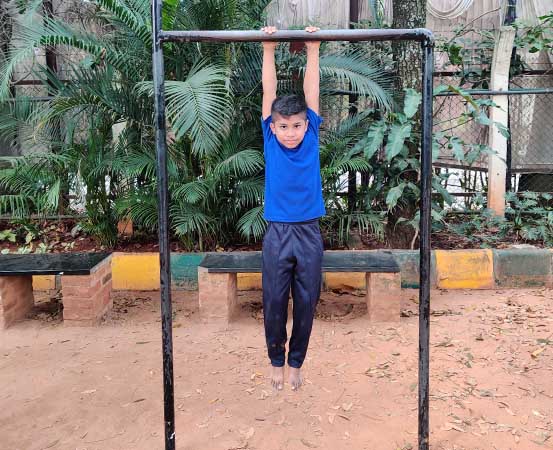
Height, much like weight, is just a number, a physical parameter that can be measured, but is not always a measure of superiority. Then again, when it comes to many jobs, including the armed forces, the bar is set high for selection, quite literally.
Of course, there are many advantages of being tall, aesthetics apart. There are many sports and activities where height gives an advantage. Many people even consider height to be attractive and a sign of healthy disposition and genetics. It can reduce with age, due to spine shrinkage.
All these reasons make people look for ways that can add a few centimeters to their height. One of the commonly believed methods is exercise. But can regular exercise increase your height?
Factors that determine height
Genetics is the major factor that determines the height of a person. Agreeing to this, Sunil Kumar, a fitness coach from Bangalore, shares another crucial factor. “The regulation of the growth hormone in your body is an important factor.”
“Nutrition and effective sleep are important,” shares Dr Sidharth Unnithan, a sports medicine doctor from Ernakulum, Kochi, Kerala. “Children, especially, should eat nutritious food and get ample sleep. Eight to ten hours a day is the recommended minimum.”
Vitamin D, which aids the absorption of calcium from the food, is also important for bone strengthening and lengthening during growth spurts.
Can exercise influence your height?
“Age group and gender play crucial roles in determining your height,” says Shivani Ranjit, a sports and exercise scientist from Chennai. One’s height also depends on the growth spurt. While girls usually grow until the age of 14–15 years, boys continue to grow till they are 16–18 years old. Ranjit explains, “The mechanical load created by the movement during exercise or sports helps in bone growth during early adolescent years.”
Growth hormone is a key regulator of linear growth during early adolescence. “Between the ages of 9-11, the production of growth hormone in the body reaches its peak, after which it gradually tapers. Hence, doing plyometric exercises at that age might influence bone length and density,” adds Kumar.
Further, the growth plates made up of cartilage present near the ends of long bones of the body have a role in enhancing height. Dr Unnithan adds, “In a pre-pubescent child, the growth plates haven’t closed. Hence, exercises or sports like football and basketball, which involve running and jumping, can lead to an increase in height. However, once you attain puberty, these growth plates close, as a result of which exercising stops having as much impact on one’s height.”
Can exercise increase height? What science says
Some people believe that one can increase their height by doing exercises like swimming, pull-ups, hanging, and so on. However, experts share that there is no scientific evidence for it. “Activities like swimming, climbing and hanging relax and elongate the spine to a very small extent, which might make you feel a little taller. However, it’s temporary,” says Ranjit. “After that, when you are erect, the effect of gravity compresses the spine back to the normal height.”
Kumar adds, “Many people working out since their late teens have not had a growth spurt despite doing a lot of pull-ups and plyometric exercises.”
Irrespective of whether they lead to an increase in height, a regular exercise routine is important to lead a healthy life.
Takeaways
- Many factors, such as genetics, nutrition, sleep, hormones, age and gender govern the height of the person.
- Exercise and sports play a role in increasing height during early adolescent years.
- Once puberty is attained, any increase in height observed post a workout is temporary and seen due to spine decompression. It is not permanent growth.

















